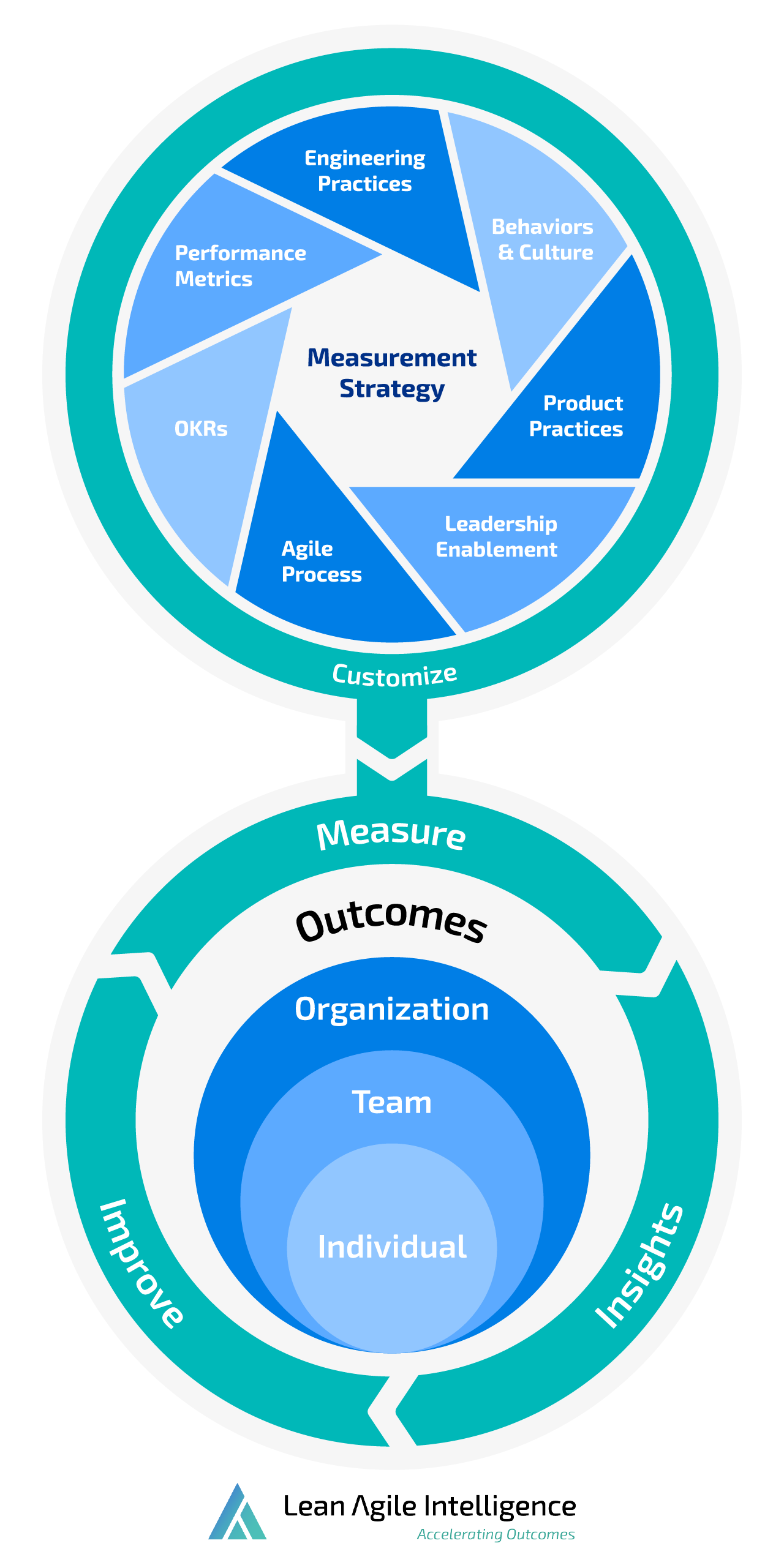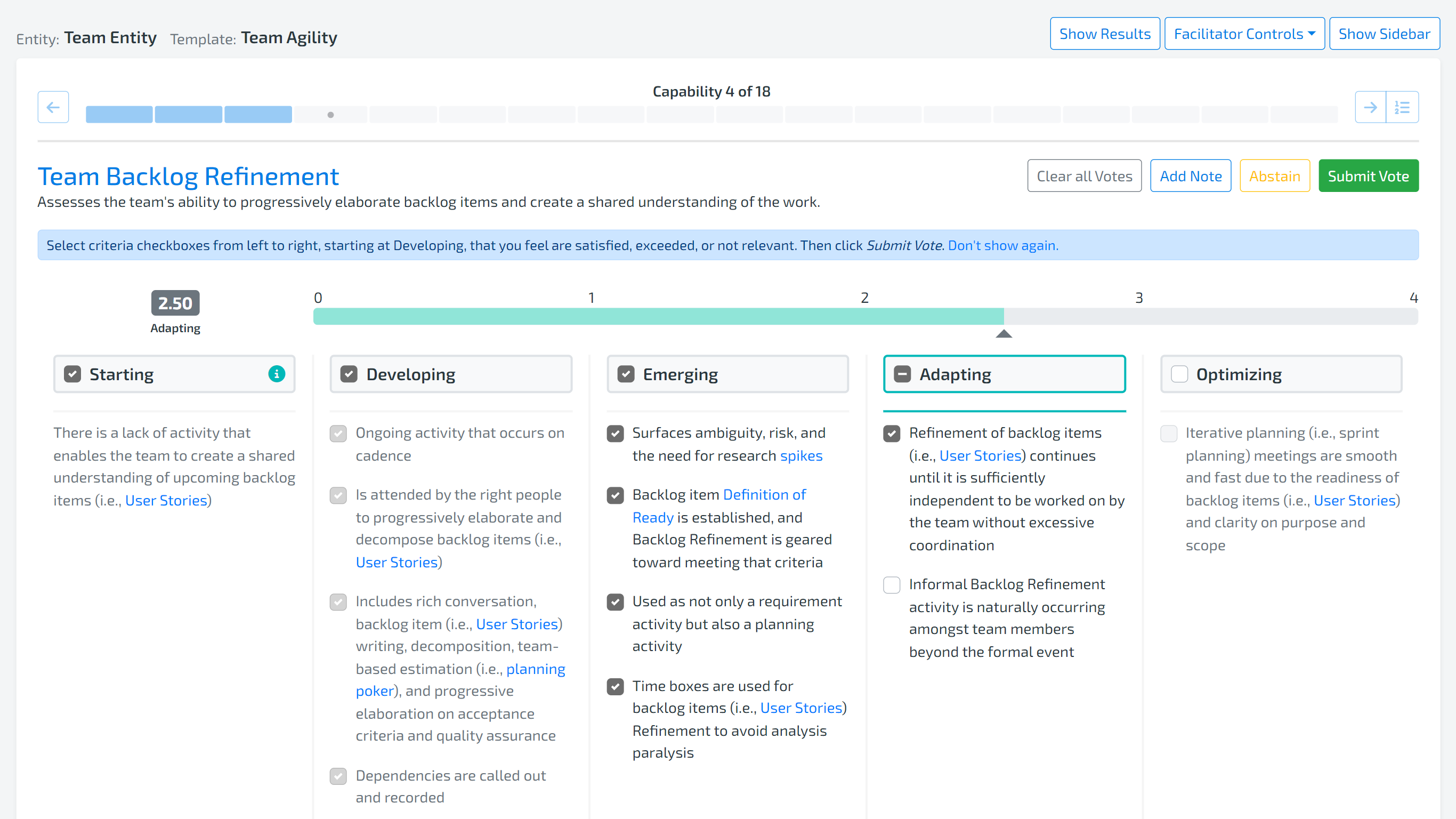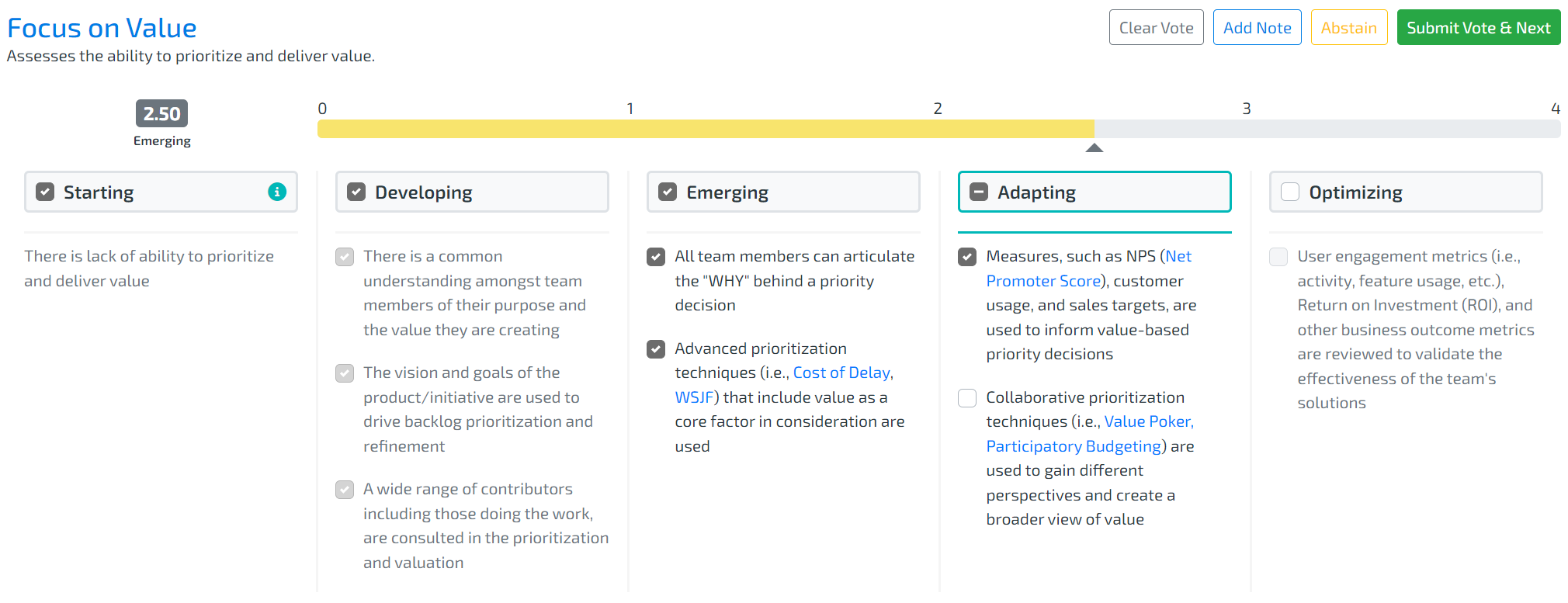Continuous Capability Building
Improvement is Continuous, Not Transformative

Design to be Fit for Purpose
Elevate what matters. The Lean Agile Intelligence Measurement Strategy is a holistic and measurement approach that considers both qualitative and quantitative measures, and aligns capability development to organization strategy and objectives.

Execute with Structure and Alignment
Improve with a purpose. Align and focus efforts on building and scaling the capabilities necessary to achieve the desired results of an operating model in complex business settings. Measure your current state, identify blockers, and clearly identify steps to achieve your organization's objectives.
Our Core Constructs
Outcomes
Results required from a modern-day operating model within a complex-business environment.
Capability
A practice, behavior, or metric essential to creating the required outcomes of a modern-day operating model within in a complex-business environments.
Dimension
Group of related capabilities that together help create the desired outcomes of a modern-day operating model.
How it Works
Outcomes span across dimensions and are impacted by multiple capabilities.
Your desired outcome(s) is the input to identifying the capabilities you should focus on building.

Capability Proficiency Stage Growth Criteria
A set of techniques with a common pattern distributed over five proficiency stages utilized by participants to assess.
Starting
"Starting" to explore the capabilities and transition from traditional ways of working.
Developing
"Developing" an understanding of the value of the capabilities and adopting the foundational techniques needed to be successful.
Emerging
"Emerging" beyond the foundational techniques of the capabilities and is embracing it as they become more proficient.
Adapting
"Adapting" the capabilities to extract the full benefit, leveraging advanced techniques, and coaching others on the value it brings.
Optimizing
"Optimizing" the knowledge sharing of their capabilities learnings across the enterprise, accelerating adoption.

Qualitative Capability
Develop and refine modern work practices and behaviors essential to competing in complex business environments. The Growth Criteria in each Proficiency Stage equips each level of your organization with actionable steps to improve in what matters. The achievement of each stage represents a leading indicator of the impacted outcomes.


Quantitative Capability
Get more objective with our metric capabilities. Measure and track metrics on the same Proficiency Rating scale to simplify and normalize across the organization. The achievement of each stage represents a lagging indicator of the impacted outcomes.
The Secret Sauce
Measuring the progress of both leading practice and behavior qualitative capabilities and lagging metrics at every level of the organization will result in a comprehensive view of your system of work so that you can identify what is blocking value delivery and make informed data-driven decisions.
Examples
| Level | Capability | Measurement Type | Dimension | Associated Outcomes |
|---|---|---|---|---|
| Organization | Multi-Team DevOps | Qualitative | Engineering | Time to Market Employee Satisfaction Reliability Responsiveness Predictability |
| Team | Team Focus on Value | Qualitative | Product | Time to Market Customer Satisfaction Responsiveness |
| Team | Deployment Frequency | Quantitative | Metrics | Time to Market |
| Individual | Engagement | Qualitative | Leadership | Employee Satisfaction Innovation |